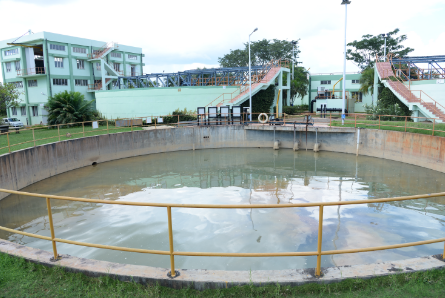Bangalore Water Supply and Sewage Report
Published on by Water Network Research, Official research team of The Water Network in Government
With the polluted lakes no longer supplying it its water, the Bengaluru draws 1350 MLD from the Cauvery river, the lifeline of the city and other districts, for its needs and lets out almost 80 per cent of it as sewage later.

Source: The Bangalore Water Supply and Sewerage Board (BWSSB)
Although it generates 1,000 MLD of sewage on an average on any given day, sadly it's not able to treat all of it.
The Bangalore Water Supply and Sewerage Board ( BWSSB) admits it treats only 843 MLD at its 14 Sewage Treatment Plants (STPs) across the city. In fact, until recently it only treated 721 MLD before it increased its capacity earlier this year.
How much water is supplied to Bengaluru every day?
- 1350-1400 MLD
- How much sewage is generated?
- Of the total water supplied about 80 percent come out as sewage. Roughly 1000 MLD of sewage is generated everyday in the city.
- How much of the sewage is treated?
- Of the 1000 MLD, BWSSB claims to treat 843 MLD 843 MLD
As many as 324 of 657 apartments around Bellandur Lake do not have Sewage Treatment Plants
Forty four apartments are building STPs
The KPSCB has issued 170 notices to the apartments around Bellandur Lake for failure to treat their sewage
Upcoming STPs across Bengaluru
- Expected to be completed by 2017 end.
- Bellandur 90 MLD
- Kengeri 60 MLD
- Doddabele 20 MLD
- Horamavu 20 MLD
- Yellamappachetty 15 MLD
- Kadugodi 6 MLD
But going by sources even this claim is not true. With power issues and lack of maintenance dogging its STPs, the BWSSB barely manages to treat 500 MLD, they say.
Ask the BWSSB about its failure to treat all of the city's sewage and a senior officer admits that with its area of operation increasing over the years it is not able to fully do its job. "The water board was only tasked with taking care of water supply and the sewage in the core areas spread over 245 sq. kms when first set up.
But with the addition of areas under the city and town municipal councils, its jurisdiction increased by 330 sq.kms. Also with the addition of 110 villages it is now required to take care of another 225 sq. kms, which has made its job almost unmanageable," he contends.
Read full article: Deccan Chronicle
Media
Taxonomy
- Wastewater Use
- Raw Sewage
- Raw Sewage Recycling
- Integrated Water Management
- Sewage
- Water Utility
- Water Management
- Utility Management
- Water Resources Management
- India
3 Comments
-
Bangalore is not unlike any other developing city, new development is going ahead without the necessary infrastructure in place. People get the nice new apartments and a growing economy but to the detriment of the surrounding environment. This conflict cannot continue as it will reach a turning point where if the local environment is so polluted (and lets face it the lakes are toxic dumps), that living there will be a the challenge in itself. Either the City starts implementing better treatment and subsequent support infrastructure, or the people living there implement their own solution. No matter what everyone will still have to pay more.
Keeping the environment clean or even cleaner than it currently is costs money, but what that does generate is opportunity. Where there are opportunities there is potential for more economic development. Keeping the city clean of sewage pollution is the opportunity providing more wealth and employment. With the two working hand in hand this will lead to sustainable development, something sadly lacking here.
What will it take for all sides to reach agreement? There needs to be momentum to reach this point. Somebody or organisation needs to throw in an olive branch as this cannot continue as it stands.
-
STPs are technically unable to treat sewage as they cant remove nutrients or heavy metals. Most of them are dogged by maintenance. The By pass valves at pumping stations that are pumping untreated sewage to the STPs help them a lot, they just divert the untreated sewage into the public water rivers, streams, drains or lakes. The first step would be for the public to ask for locking up the By -pass valves. Then the STPs will become worse than the drains and the workers may just run away due to toxic levels of H2S gas.
-
would love to clean that lake on PPP. :) i wonder if the government welcomes PPP.